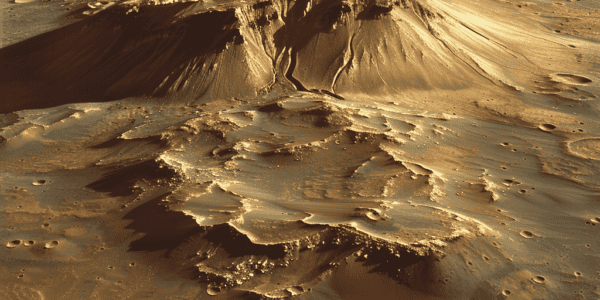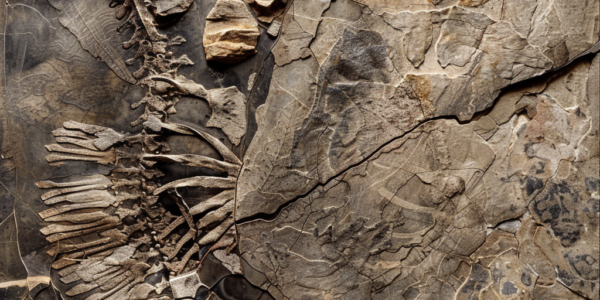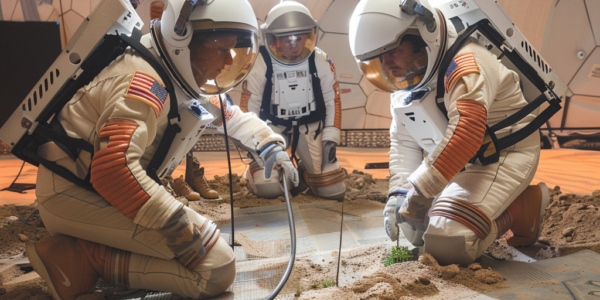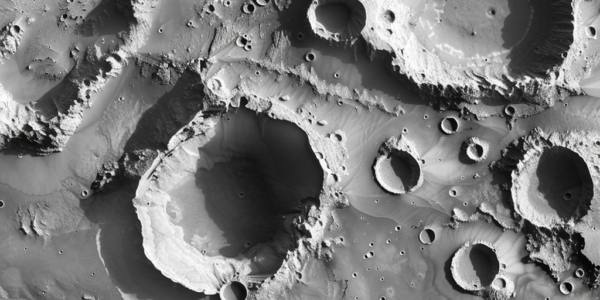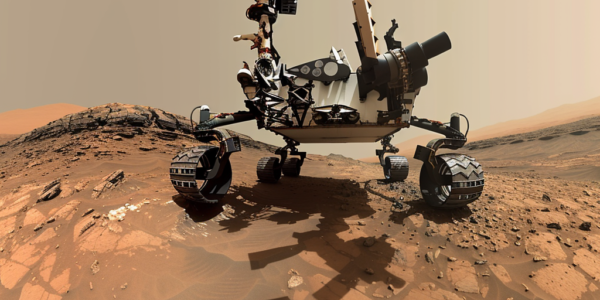MAGGIE: The Future of Martian Exploration
The success of the Ingenuity helicopter has paved the way for a potential airborne future for Mars with the development of a robotic, 18-propellor flying vehicle named MAGGIE. Selected for phase 1 development by NASA’s NIAC program, MAGGIE aims to explore Mars from high in its pinky-red sky with its impressive capabilities, including reaching Mach 0.25 and covering a range of 16,048 km across a Martian year.
SpaceX’s Super Heavy-Starship rocket completes third test flight
SpaceX’s Super Heavy-Starship rocket completes successful test flight, reaching space and experiencing peak heating before breaking apart during descent. Despite the mishap, company officials see the flight as a major step forward and believe the data collected will help improve performance for the next test flight.
Surprising Insights About Debris Flows on Mars
New research from planetary researcher Lonneke Roelofs at Utrecht University has revealed surprising insights about the formation of gully landscapes on Mars. The study challenges the previous notion that gullies were formed exclusively by liquid water and has significant implications for our understanding of water on Mars and the search for potential life on the planet. The findings are based on experiments conducted in a specialized ‘Mars chamber’ that simulated the process under Martian conditions, providing direct observational evidence of debris flows driven by CO2 ice.
Giant Volcano and Possible Glacier Ice Discovered on Mars
A giant volcano and possible buried glacier ice have been discovered in the eastern part of Mars’ Tharsis volcanic province, near the planet’s equator. This groundbreaking announcement was made at the 55th Lunar and Planetary Science Conference in Texas, revealing that the giant volcano, provisionally designated “Noctis volcano,” had been hiding in plain sight for decades. The discovery of this giant volcano and potential glacier ice points to an exciting new location to study Mars’ geologic evolution through time and search for signs of life. The structure’s gigantic size and complex modification history indicate that it has been active for a very long time, from ancient through recent times. This finding opens up new possibilities for future exploration and research on Mars.
Mars influencing Earth’s deep oceans with ‘giant whirlpools,’ scientists say
New research suggests that Mars may be influencing deep ocean currents on Earth, leading to the formation of ‘giant whirlpools.’ Scientists analyzed sediments to look back tens of millions of years into Earth’s past, revealing 2.4 million-year climate cycles linked to the interactions of Mars and Earth orbiting the Sun. This phenomenon, known as ‘resonance,’ affects the shape of their orbits and translates to periods of increased solar energy and warmer climate on Earth, correlating with more vigorous ocean currents. However, these natural climate cycles are not linked to the rapid heating the world is experiencing today due to human activities. The study’s findings provide valuable insights into the forces driving deep ocean currents and their impact on the Earth’s climate.
Clarkia Middle Miocene Fossil Site: A Key to Understanding Life Beyond Earth
Researchers have been studying the Clarkia Middle Miocene Fossil Site in Idaho, which has provided valuable insights into ancient environmental conditions and the potential for life on Mars. The well-preserved fossils dating back over 11 million years have become a focal point for studying the potential for life on other planets, particularly Mars. The site’s sediments have been used to study biomarkers, offering valuable information about Earth’s history and ancient environmental conditions on Mars. The research conducted at the site represents a significant step forward in our understanding of potential life beyond Earth, paving the way for new insights into the search for extraterrestrial life.
NASA Seeks Applicants for Simulated Mars Surface Mission
NASA is seeking applicants for its next simulated one-year Mars surface mission, CHAPEA, to help inform plans for human exploration of the Red Planet. The mission involves a four-person volunteer crew living and working in a 3D-printed habitat, simulating challenges of a mission on Mars. Applicants must be healthy, motivated U.S. citizens or permanent residents, 30-55 years old, and proficient in English. Compensation is available for participants. These missions provide important scientific data to validate systems and develop solutions for future missions to Mars.
Mars May Have Experienced Precursor to Plate Tectonics, Study Suggests
Recent study suggests Mars may have experienced precursor to plate tectonics, indicated by pervasive volcanoes and distinct rock types. Researchers focused on Eridania Basins in Mars’ southern hemisphere, identifying numerous volcanic features and high felsic materials. Findings offer valuable insights into early geological processes on Mars and provide comparative perspective on planetary evolution.
Perseverance Rover Discovers Potential Water Reservoir on Mars
NASA’s Perseverance rover has made a groundbreaking discovery, uncovering evidence of a potential water reservoir beneath Mars’ surface. The findings, detailed in Science Advances, suggest the presence of a once-thriving lake in Mars’ Jezero Crater, offering hope of uncovering ancient secrets. Previous missions confirmed the existence of water ice on Mars, but the revelation of a standing lake and the possibility of preserved life forms mark a notable advancement in space exploration.
NASA’s Curiosity Rover Close to Solving Mystery of Methane Biosignature on Mars
NASA’s Curiosity Rover may have finally cracked the mystery of methane biosignature on Mars, aiding in the search for signs of past or present life on the red planet. New findings from the research team evaluating data from the rover suggest that they are closing in on the source of the elusive methane gas in Mars’ atmosphere, potentially revealing whether it is caused by life or natural processes. High power simulations and modeling of atmospheric signals on Mars have helped the team refine their search and understand how methane moves through the planet’s network of underground fractures, offering new insights into the fluctuations of methane levels.




